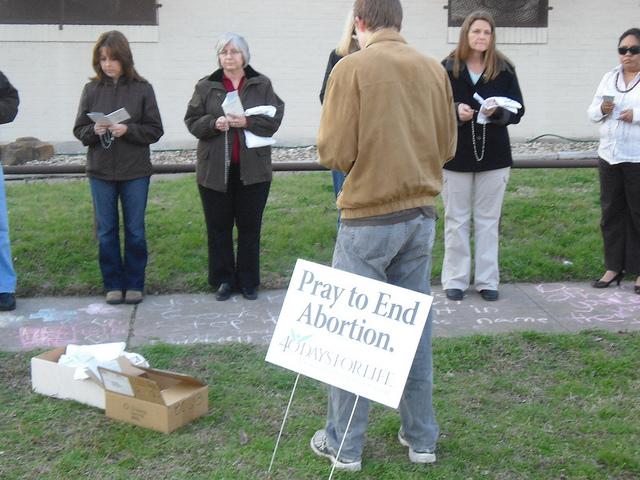Editor’s note: When this piece was adapted for print, it was cut down in order to fit the given space. It has since been restored to its original length for online publication.
Pro-life vigil, 40 Days For Life, started Sep. 24. Last week activists appeared on State Street and around campus showing, as some are calling them, graphic images of an aborted child. Moreover, questions have been raised as to whether these images are efficient and effective ways to spread a pro-life ideology, if they’re appropriate, and if not, what should be done in their place. Now, on setting out to respond to these questions, I found I have serious fundamental disagreements with the wordings. Words like “graphic,” “efficient,” “effective,” “ideology,” and “appropriate” put an innate spin on the issue at hand and make the questions impossible to answer. Therefore, before I answer the questions, I have to address the language with which they’re put forth.
Let’s begin with ideology. An ideology is the science of an idea. It naturally implies an element of “we would like to see the world this way” or “this is the mindset which we wish you would adopt.” Though an ideology can be a truth, an ideology is not necessarily the truth, and to call this movement one of spreading ideology is to imply that pro-lifers are not fighting for facts as cold and hard as the aborted babies they represent. To use a popular reference that many readers will probably quickly dismiss: Would you say that the soldiers marching German citizens through Nazi death camps after the war were spreading an ideology? Or were they simply revealing something horrible that, because of ideology, had been shamefully ignored? Ideologies that serve as excuses for abortion are what the graphic abortion images are combating, not supporting.
Next, let’s discuss the words “efficient” and “effective.” These words, as part of the questions, necessarily make an additional request of the answerer: to make the judgment of the potential benefits or costs to the cause of the pro-lifers of showing these images. Now, if you’re still looking at that cause in terms of an ideology, it’s no wonder people who walk by the activists automatically shut down and try their hardest to disengage from them. No one wants to be brainwashed or persuaded on the street, right? However, if you look at the images in terms of exposing a reality exactly as a camera does — a totally neutral eye—then the words take on entirely new meanings.
Suddenly, they speak much more toward the ability to reach out to people and attain justice for a wrong being committed. Thus, it’s important that you know when I would answer that these “graphic” images are efficient, I would mean that yes, they get the point across. And when their effectiveness is questioned, I say, I hope they are. I hope that we are not so prejudiced and ideologically prioritized that we can’t see those little bloody hands and recognize something of ourselves in them.
On to the word “appropriate.” Naturally, having opened the pamphlet, seen the images, read the text and heard the pro-life conversion stories like Abby Johnson’s, author of “Unplanned,” I find this word impossible to consider. If this is only an ideology being spread, then there simply cannot be a just discussion on whether the images are appropriate. To judge one way or another is to impede on First Amendment rights and to dance with censorship, which, quite frankly, this country has enough of already. However, if this matter is to be considered outside of ideology, then for me to discuss the appropriateness of it is to say we must judge the appropriateness of distributing pink cancer ribbons.
“Appropriateness” is applicable to picking your nose in class. Or in church. Or whether Florida schools can distribute satanic coloring books to grade school children. The appropriateness of the images, however, is a request for me to judge whether the murdered defenseless are allowed to have breathing advocates. These demonstrators are trying to show the public that they have proof of the murders that, so long as they remain hidden, society is willing to accept. It’s the same situation with Benghazi and those families who lost loved ones and who still have not received justice. There is no question as to appropriateness of their appeals: There is simply the matter of whether their appeals will be answered.
It is safe to say that the question of what else should be done instead of the images was covered in the previous paragraphs, as have the words “fetus” and “graphic.”
And now I hope you see why I cannot answer these questions. Hopefully, in tearing them apart, I’ve displayed how pointless it would be to do so.
Theresa Cooley (tcooley@wisc.edu) is a junior majoring in English.


